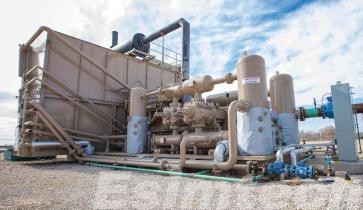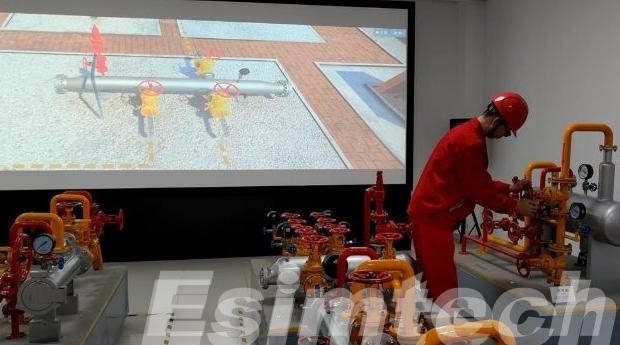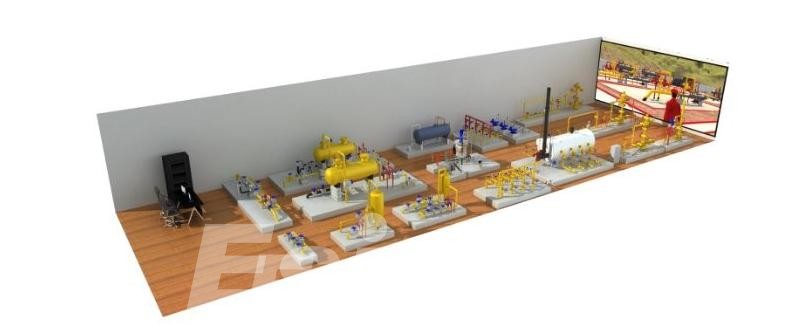How Gas Production Operation Simulators Improve Operator Training and Safety
In today’s energy industry, gas production operations demand not only technical excellence but also highly skilled operators who can manage complex systems safely and efficiently. As a manufacturer of advanced simulation technology, we’ve seen how traditional training often fails to prepare teams for real-world challenges. A gas production simulator bridges this gap by offering a realistic, risk-free environment for operators to practice and refine their skills. This article discusses how gas production operation simulators improves safety, performance, and confidence at every operational aspect..

Gas Production Operations and Their Training Challenges
Modern gas production operations are intricate systems that combine advanced process control, mechanical equipment, and human decision. From wellhead compression and separation to dehydration and metering, every step requires coordinated precision and immediate response. A single deviation—due either to human error or process fluctuation—can lead to loss of efficiency, equipment malfunction, or even safety failures.

Operator preparation for such advanced environments is not a simple task. Real-world practice opportunities are rare because shutting down or simulating live production equipment is hazardous and costly. In the majority of plants, new operators are restricted to observing and not actual-world practice, which is skill-acquiring.
Also, as digitalization and automation advance, operators are now reading more data, working sophisticated control interfaces, and making faster decisions than ever before. Most conventional training programs unfortunately fail to replicate the dynamic, high-stress world of real gas production work. This gap between classroom instruction and field implementation is still one of the biggest challenges to safe and productive operations.
For organizations determined to attain operational excellence, it’s clear that traditional training methods will no longer suffice. To bridge the theory-to-practice gap requires more realistic, controlled, and immersive simulation-one that accurately simulates the complexity of today’s gas production operations.
What Is a Gas Production Simulator and How It Works
In our field, there’s a saying: “Experience is the best teacher, but the tuition can be too high.” This is the fundamental problem we set out to solve. So, what exactly is a gas production simulator?
Forget any notion of a simple animation or a basic computer game. Think of it instead as a high-fidelity flight simulator for your gas production operation. It’s where your control room and field procedures come to life in a risk-free environment.
Having spent years on the manufacturing side and talking with countless veteran operators, we know that trust is earned through realism. That’s why our approach to building a Gas Production Simulator is rooted in creating a “digital twin.” Here’s a practical look at how we make it work:
1. The Foundation: A Physically Correct Engine
At its core, the simulator is rooted in a robust mathematical model that truly represents the physics and thermodynamics of your specific gas production process. We’re talking about real-time calculation of multiphase fluid flow, heat transfer, pressure-volume characteristics, and equipment performance. It’s not so much looking right as doing right. If a student adjusts a compressor speed or a choke valve, the simulator calculates the resulting pressure change, temperature, and flow rates throughout the system as if it were deployed in the field.
2. The Interface: Your Actual Control Environment
The power of the simulator is lost if it’s unknown. That’s why we integrate your own Distributed Control System (DCS) or SCADA graphics and logic. Operators don’t just “play” a simulation; they’re operating a virtual panel that is identical to their normal place of work. This generates real familiarity and muscle memory, and the training is directly transferred to the job.
3. The Scenarios: Routine to Critical
It is here that the training benefit truly comes into its own. A solid gas production simulator allows you to simulate normal operation into conditions that are impossible or too hazardous to do on a live basis.
- Normal Procedures: Good routine start-up, shutdown, and well-handover procedures.
- Upset Conditions: React to piece of equipment failure, e.g., pump failure or heat exchanger fouling.
- Emergency Drills: Simulate and become familiar with the response to high-consequence situations like a well control blowout, pipeline spill, or emergency shutdown (ESD), with the system reacting realistically to each action taken.
Actually, a gas production simulator is not a piece of software – it’s an operating test site. It takes abstract knowledge and turns it into second-nature, hands-on skill by providing a sandbox in which the physical laws are enacted, but in which failure incurs no actual expense. That’s how we are training operators to do the job, not just get it done, but to do it exceptionally well.

How Simulation Training Improves Safety & Performance in Gas Production
Operational competence in gas production is intimately connected with bottom-line performance. It is a mutual impossibility. As much as formal training is anticipatory, standing alone it is inadequate to generate the crucial intuition required for safety crisis and performance improvement. That is where a high-fidelity gas production simulator moves from being a useful tool to a strategic asset, making real-world improvements in two discrete areas.
Fostering Rock-Solid Safety Competence via Experiential Learning
You may be able to teach safety procedures, but readiness stems from having “been there before.” This is the most important advantage of simulation.
- Building Memory for Emergencies: We can simulate high-consequence events—a blowout in well control, a pipeburst, a compressor fire—that are too dangerous to conduct on live equipment. Operators don’t just read the Emergency Shutdown (ESD) procedure; they execute it, under stress, time after time. Through repetition, automatic, correct responses are built, dramatically reducing critical decision-making time during an actual event.
- “Safe-to-Fail” Culture: An operator can make mistakes—and learn from the actual, though simulated, consequences—without inflicting real-world damage through a Gas Production Simulator. What happens when you close the wrong valve on blowdown? The simulator illustrates the resultant pressure spike or equipment destruction in a simulated environment. This powerful, riskless learning sears lessons much more indelibly than any classroom debriefing ever could.
- Coordination of Teams Under Stress: Modern-day simulators enable multi-position training, under which field technicians, control room operators, and supervisors can practice coordination and communication under intricate incidents. This breaks silos and ensures the entire team performs from the same playbook when needed.

Driving Tangible Performance Improvement in Day-to-Day Operations
In addition to crisis management, a gas production simulator is also a proven driver of efficiency and excellence in day-to-day gas production operation.
- Mastering Complex Procedures: Start-ups and shut-downs are the most critical and costly portion of any gas production cycle. In the simulator, operators can rehearse these sequences to perfection, learning to minimize flaring, minimize equipment stress, and shorten the transition time—impacting directly on operational efficiency and emissions.
- Deep Troubleshooting and Optimization: Instead of merely responding to alarms, operators can use the simulator to debug the root cause of a process upset. Why isn’t the dehydration unit functioning? Is the slug catcher filling up too fast? The simulator becomes a diagnostic sandbox, where analytical capabilities are developed. Besides, operators can experiment with process variables to arrive at the optimum setpoints for throughput and yield maximization, transforming them from passive controllers to active optimizers.
- Standardizing Best Practices: A simulator trains every operator, regardless of their experience level, to the same high level using the same best practices. This eliminates individual deviations and shortcuts, leading to more consistent, reliable, and efficient plant performance overall.
In effect, simulation training closes the costly gap between knowing what to do and actual capability to do it correctly under pressure. By investing in a gas production simulator, you are not just checking a training box; you are systematically building a workforce that is not just safer, but more skilled, proactive, and capable of optimizing the entire gas production operation.
Integrating Gas Production Simulators into Operator Training Programs

Creating a workforce that is safer and more skilled involves more than simply purchasing a simulator; it takes strategic alignment within your current training environment. The vision is to go beyond single session usage and establish an ongoing culture of learning.
The most effective approach is the hybrid model. Start with theoretical classroom teaching being provided with actual context using the gas production simulator. Then proceed to practice routine procedures, such as start-up and shut-down routines, in the safe virtual environment. This provides a sound basis of competency before an operator even gets his or her hands on live plant.
The true potential is tapped when proceeding to advanced fault scenarios and team-based training. Here, the simulator transitions from training tool to assessment platform, recording objective quantifications of response time and decision-making. This allows you to confirm competency, review skill deficiencies, and tailor ongoing training with precision. By incorporating the gas production simulator into this forward-driven loop—from new hire orientation to ongoing professional development—you ensure your training investment has a direct impact on a more competent, more resilient team for your gas production operations.
Conclusion – Building a Safer, Smarter Gas Workforce
Investing in a gas production simulator is investing in operational excellence and safety. With its realistic, risk-free simulation, operators gain hands-on experience, sharpen their decision-making skills, and gain the confidence for high-stakes gas production operations. Simulation training not only reduces errors and accidents but also enhances overall efficiency and teamwork among the workforce. With continuous development in the gas industry, the use of simulators in training programs ensures a brighter, healthier workforce—better prepared to solve existing operations challenges while maintaining the highest levels of safety in gas production.
